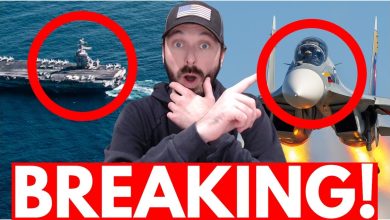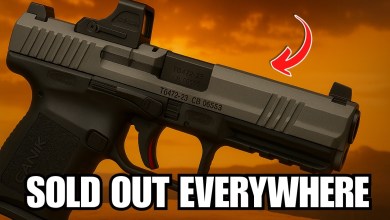Pack for a Multiday Rafting Trip: GearJunkie’s Guide to Everything You’ll Need

When my friend told me she’d be rafting the Colorado River this June on a private trip through the Grand Canyon, I was half-joking when I asked, “Wait, can I come?”
Much to my surprise, she said I could. I quickly had to decide whether to take the spot. I knew it could be a once-in-a-lifetime opportunity. This coveted trip is on people’s bucket lists, after all.
I committed. And after spending 18 days on the river, I understand the hype
Adventuring into the wild is not new to me, but anything on water is. I’ve backpacked, trail run, and traveled in foreign countries for weeks at a time, but never spent more than a few hours on a raft or boat.
I did research and read through many emails. We met virtually with our trip leader, and I was told that packing for a rafting trip is similar to backpacking. However, on a raft, there’s the added benefit of not having to worry about weight or space constraints.
This was helpful to a point. I knew that I wasn’t in charge of a boat, first aid, food, or cooking supplies. Still, I had to pack for about 20 days of camping, 18 of which were on the water. And I still didn’t feel completely informed about what exactly I needed to pack.
Post-trip, my gear falls into a few loose categories: items I brought and used, items I didn’t need but was happy to have, items I didn’t need at all, and a few items I wish I had packed.
Read on for what to wear, how to sleep, and river-specific gear, like splash guards, PFDs, and carabiners. This list applies to any kind of multiday river rafting trip. For even more tips on what to expect on a Grand Canyon rafting trip specifically, see GearJunkie’s guide on What to Know About This Bucket List Trip.
Grand Canyon Rafting Expedition Packing List
Apparel
The most critical factor in your apparel for a trip like this is sun protection and comfort. Depending on the campsite and when the sun comes over the cliffs, you could be in full sun anywhere from 6:30 a.m. to 7:30 p.m. And once you are on the boat, you can really only reach whatever you packed in your daypack.
To summarize: I recommend bringing three sunshirts and three pairs of pants for on the water and some camp clothes.
When at camp, I would change into a pair of loose short overalls (Columbia PGF Open Water Short Overalls or Marshwear Escape Shortalls) over a swim top or sports bra, or my Columbia Cove Beach Skort with whatever tank top I also slept in.
I did laundry twice on the river and rotated through clothes from there. Do not buy gear that is light colored; it will be brown by the end, and Borax can only help so much.
Also, even though it was a June trip, I did pack what the rafting enthusiasts called an “oh crap” bag, which had a lightweight down puffy, a winter beanie, and a long-sleeved base layer. I didn’t have to pull it out at any time. Still, if I had swum through a rapid, the potential for hypothermia is a possibility, as the average water temperature is 50 degrees Fahrenheit. OK, now for the nitty-gritty details.
Tops
Hooded Sun Shirts
On the boat, my go-to was a hooded sunshirt thrown over a sports bra or bikini top, allowing me to pop the hood over a baseball cap and protect my ears and neck. Sunshirts are often lightweight and quick-drying. However, when it’s above 90 degrees and you are in full sun, having a shirt that holds a little water for a bit isn’t a bad thing.
The Lightrange Sunrise Hoodie ($70) from The North Face was extremely lightweight, had thumb loops, and even an opening for a ponytail. The Sawyer Sunshirt ($89) from Wild Rye also had thumb loops and a ponytail opening, as well as a large enough hood to fit over a helmet.
Two of my favorites were the PFG Wild Cast Sun Hoodie ($60) from Columbia and the Stio Vescent Hoodie ($119). The PFG top had a few extra features that were very helpful, like a drawstring for the hood and an integrated loop near the collarbone to hold sunglasses or a safety whistle. The Stio top also had extra buttons to secure the hood and a small zippered chest pocket for chapstick. You can find a lot of other sun shirt options on GearJunkie’s guide to the Best Sun Shirts for more options.
Button-Up Sun Shirts
I loved a button-up to throw on at camp in the morning or at night when I wanted something more breezy. I wore the long-sleeve Lightrange Shirt ($95) from The North Face or the Remi Shirt ($99) from Wild Rye.
Party Shirts
Whether it’s a Lil’ Party Shirt ($89) from Wild Rye or whatever legit costumes you have, bring at least one or two silly items to wear. When you crush a rapid or make it to Tequila Beach after Lava Falls Rapid, you’re going to want them.
Changing Poncho
The PackTowel Changing Poncho ($65) is nice if you want a bit of privacy in mostly open camps. There’s not much privacy on the river, and you get used to it pretty quickly. As one boat captain told me, “You can give privacy, but never take it.”
Swimsuits
Under the sunshirts, I wore either a sports bra, like the Brawnyn Essential Racerback Sports Bra ($85), or a bikini top. The Patagonia Reversible Seaglass Bay Bikini Top ($75) or the Zehra Bikini Top ($65) from Title Nine fit comfortably under my life jacket.
Bottoms
Pants
UPF bottoms are essential, since you will be sitting with your thighs and calves exposed on the boats. I wore shorts the first day on the river and promptly got heat rash. I chose pants for almost the rest of the trip.
The Columbia PGF Tidal Roamer II Stretch Pants ($55) and Stio CFS Board Pants ($89) were both great. My favorite bottoms were the Frontier Pants ($79) by Marshwear. They were a bit looser with superb four-way stretch for scrambling on side adventures.
For more options, check out GearJunkie’s guides to the Best Hiking Pants for Men and the Best Hiking Pants for Women.
Shorts
Unless you prefer slathering on copious amounts of sunscreen every day, multiple times a day, you don’t need to bring too many pairs of shorts.
Baggier shorts with longer inseams, like the REI Co-Op Trailmade Shorts ($50), the Patagonia Baggies Shorts ($59), and the Columbia Backcast II Water Shorts ($35), were suitable for on the boat and during hikes.
Bike Shorts
For the longer hikes, I wore the Patagonia Maipo Shorts ($69) with an 8-inch inseam or the Arc’teryx Essent High-Rise Utility Short ($90). Both have side pockets to stash your phone for pics, and the Essents also have pockets in the waist and a keyring loop in the back.
I didn’t pack the perfect footwear for this trip; I ended up not using one pair of slip-ons and borrowed a pair of sandals from someone else. Overall, you’ll want a pair of close-toed water shoes, two pairs of strappy sandals (one for on the boat, one for if you sacrifice them to the river, or one that you only wear at camp), and a pair of old trail runners or hikers for some of the longer hikes that still cross streams.
Closed-Toed Water Shoes
Astral’s Brewer 3.0 ($135) and the over-the-ankle version, the Hiyak ($150), were my go-to shoes for almost every day on the water. Check out our review of the Astral Brewer 3.0 for a breakdown of why that shoe is so awesome. I wore these on numerous short side hikes to waterfalls or canyons, and on an 8-mile hike to Thunder Falls.
Check out other water shoe options on GearJunkie’s guide to the Best Water Shoes.
Hiking Sandals
In my everyday life, I don’t love strappy sandals like Tevas or Chacos, but by day three of the trip, I was very thankful that my friend had an extra pair of Teva Hurricane XLT2 Sandals ($80). Many of the experienced crew also wore the Cairn EVO 3D Pro Sandals by Bedrock ($140).
GearJunkie also has guides for the Best Hiking Sandals and the Best Hiking Sandals for Women.
Crocs
A regular pair of the Classic Clog ($50) from Crocs was also a favorite on the trip, once docked and at camp. Strapped sandals offered a bit more security, but the Crocs do have an added level of comfort.
Old Trail Runners
I wore the Astral sneakers on almost all of the shorter side hikes and even one longer one, but opted for an old pair of HOKA trail runners that I didn’t mind squishing in my bag, getting wet during creek crossings, but still had enough grip to keep me on the trail during a few longer treks.
Check out GearJunkie’s guide to the Best Trail Running Shoes and the Best Trail Running Shoes for Women for more options.
Toiletries & Sun Protection
Toiletries and sun protection were one area where I packed just right. I brought a few extra pairs of sunglasses and hats — just in case — and had the perfect amount of sunscreen. I also packed enough of my everyday essentials (face lotion, nail clippers, serum, hairbrush, etc.) to feel clean and comfortable before bed, which was a must. All of these items I kept in the Pack-It TriFold Toiletry Kit ($30) from Eagle Creek.
Lotion
Be generous with the amount of lotion you bring. No one will be angry with you if you have extra moisturizer to offer up. With your skin constantly swinging between wet and dry and always covered in sand, it’s bound to become parched and possibly even peel, so pack lotion for your hands, feet, arms, and legs.
Sunscreen
For my face, I used one bottle of SuperGoop! PLAY Everyday Face Lotion SPF 50. It’s lightweight, great for general moisturizing, and fragrance-free. I also used the PLAY Everyday Sunscreen Stick SPF 50 ($32) for the tops of my hands, feet, and neck. For the rest of your body, you’ll likely go through one or two tubes of additional sunscreen.
Towels & Wipes
I brought four different sizes of towels and was glad I did. A large Nomadix ($40) was great for after showering or covering my legs for extra sun protection on the boat. I used a medium one to wipe off sand at night, a rag for eating on the boat, and a soft, clean one for my face.
I also used the Sea to Summit Wilderness Wipes ($6 for a 12-pack) for in-between shower days or to scrub dirt off my feet at night. The Original Cooling Towel ($17) from Mission was also a nice addition. I’d wet it down and sling it over my shoulders when we were hiking in the midday sun.
Sunglasses
Keep your sunglasses on with Chums retainers, and bring extras in case you lose them to the water or break a pair. For full coverage, choose a pair with side shields like the Zeal Westwater ($189) or Zeal Selkirk ($189). If having a hat strap and a retainer strap feels too much on your ears and neck, try a pair of armless sunglasses from Ombraz, which have an integrated retainer.
Check out GearJunkie’s guide to the Best Sunglasses for the Outdoors and the Best Running Sunglasses for more options.
Hats
A large-brimmed sun hat, like the Latitude Hat ($50) from Sunday Afternoons, will protect your face, neck, and ears from the relentless sun. If you prefer a sun hoodie over your hat, then opt for a regular baseball cap or the Sunday Afternoon Sun Guide Cap ($46).
Check out GearJunkie’s guide to the Best Sunhats and the Best Running Hats for more headwear options.
Drybags, Daypacks, and Packing Cubes
A few days into the trip, I realized that some gear I didn’t need to haul off the boat every night. Having two large bags made this extremely easy. One contained my daily clothes, toiletries, and sleep system. The other held anything else that I didn’t need every day or wouldn’t wear for a few days.
Large Dry Bags & Duffels
For this trip, my friend and I each carried two large packs, with a total capacity of around 135 L per person. Overall, the dry bags with shoulder straps were the best choice for hauling to and from the boat. The durable 65L NRS Bill’s Bag Dry Bag ($180) is fully waterproof with removable and adjustable shoulder straps.
The 75L Big River Dry Backpack from Sea to Summit ($200) was another favorite. It has adjustable shoulder straps, a waist belt, and daisy chains on the outside for strapping on extra gear.
A duffel-style bag, like the 55L Watershed Yukon ($229) or the 75.5L Watershed Colorado ($269), is also a good choice. With those bags, you won’t have to take everything out to get to the bottom.
GearJunkie’s guides to the Best Dry Bags and Best Duffel Bags have more options you can choose from.
Daypack
When on the boat, a drybag daypack held lunch, extra sunscreen, a book, and anything else I’d need that I couldn’t get to once the boat was rigged. The Exped Typhoon 25L ($100) is a durable daypack that kept my gear dry. The inside zipper pocket was ideal for small items, and the ability to turn the whole thing inside out and hang it by the inner liner was crucial for removing any sand.
For a smaller pack, the Skylake Dry Daypack ($130) from SealLine still fit all the items needed. See GearJunkie’s guide to the Best Daypacks for a full list of similar packs.
Packing Cubes
Using packing cubes in the deep roll-top dry bags was extremely helpful for organizing. The Eagle Creek Pack-It Reveal Packing Cubes (a set of three for $59) feature a mesh, see-through panel. The Pack-It Isolate ($59) was harder to see into, but didn’t let any sand in.
I also used mesh zipper pouches from Amazon, which came in eight different sizes. I used one pouch for my ID, cash, and stamps for postcards, another for chapstick, lotion, and sunscreen in my daypack, and a third for charging cords.
Fanny Pack
A medium-to-large panny pack would’ve been perfect for shorter off-boat adventures. For quick jaunts, it could’ve easily held my phone, a small water bottle, and even a book.
Rafting-Specific Safety Gear
PFD
You always have to wear your life jacket or PFD (personal floating device) when on the Colorado River. Outfitters do rent them, but I wore the Astral Layla ($170) and the NRS Ninja ($150). These two had more features than the basic life jackets I could have rented, which I appreciated.
You can read our full review of the Astral Layla or check out GearJunkie’s guide to the Best PFDs if you want to see other options.
Splash Jacket & Pants
Waterproof and breathable splash wear wasn’t essential on this hot June trip, but I did don the NRS Endurance Splash Jacket ($120) and the Endurance Splash Pant ($130) on a few cooler mornings with splashy rapids and shade from the canyon. They also would’ve come in handy if we’d encountered rain or storms.
You can also sport NRS HydroSkin Gloves ($40) or the HydroSkin Wet Socks ($32) if you often get cold hands and feet.
Helmet
Not everyone brought a helmet on this trip. Still, I used the NRS Havoc Livery Whitewater Helmet ($53) and popped it on whenever my boat captain wore hers, typically for the larger rapids.
Whistle
Each person must have a whistle attached to their life jacket to signal for emergencies or get people’s attention.
Walkie-Talkies
Although walkie-talkies aren’t completely necessary, we did use a pair of 5-Watt Rocky Talkies ($180). They were helpful when communicating from the lead boat to the sweep boat. They were also amusing when playing capture the flag on the water.
Solar Charger
I used the Nestout Solar Charger ($130 for four panels). It’s too heavy for backpacking but perfect for a rafting trip. The power bank holds five full iPhone or inReach charges and didn’t overheat in the sun. It comes secured in a zippered case that is water- and dirt-repellent.
Locking Carabiners
Bring six to 10 locking carabiners. You’ll use them to secure everything on the boat, from your daypack and extra shoes to buckets, Crazy Creek chairs, and water bottles.
Water Bottles & Electrolytes
Staying hydrated throughout the day was necessary, which wasn’t an issue as nearly 10 large jugs held filtered water (which were refilled sporadically from an electric filter). I always had 2 to 3 L of water in the drag bag; the Seeker 2L ($27) from HydraPak is collapsible and made from thin plastic, so the water inside cooled down quickly.
The company that outfitted the food on the trip did provide plenty of powdered Gatorade, but bringing your own mix is helpful, too.
Sleeping & Camping
Sleep System
Camp cot: As space and weight aren’t an issue, bringing a cot is a no-brainer. The affordable Osage River Camping Cot ($58) is lightweight and requires no assembly; it simply opens up like a camp chair.
GearJunkie has a guide to the Best Camping Cots to see more options. While space isn’t an issue, heavy cots are a pain to haul from the boat to the beach. Just keep that in mind.
Sleeping pad: Pair your cot with any self-inflating pad that fits the size of your cot, like the 1.5-inch–thick REI Co-op Trailmade Sleeping Pad ($85) or the 2-inch–thick Decathlon Quecha Arpenaz mattress ($75).
GearJunkie has guides to both the Best Backpacking Sleeping Pads and Best Camping Sleeping Pads. Check them out to compare your options.
Liner
Most nights, a liner was all I needed in the heat. The Comfort Blend Sleeping Bag Liner ($40) or the Breeze Sleeping Bag Liner with Insect Shield ($80) from Sea to Summit were both excellent at providing some semblance of soft comfort and wicking moisture in the summer heat.
Down Blanket
For summer months, you don’t need a full sleeping bag. Rather, pair the pad and liner with a down blanket, like the Original Puffy ($100) from Rumpl.
Pillow
Don’t skimp on your pillow situation. I loved the HEST Camp Pillow (starting at $79) for both its superb comfort and, more so, for its integrated, zippered pouch that kept it clean from grime and sand. You can find more options on GearJunkie’s guide to the Best Camping Pillows.
Tent
Most rafters slept under the stars or on their boats. I stuffed two cots into an old MSR 3-person tent with my friend on nights when we didn’t want to worry about scorpians on the ground or bats in the air. Look for a tent that’s easy to set up and spacious.
GearJunkie’s guide to the Best Backpacking Tents and Best Camping Tents has great options to shop.
Sand Blanket
Every campsite had fine, soft sand, so I used the large Nemo Victory Patio Blanket ($150 for the large) for what we dubbed the “patio” of our sleeping space. We laid it at the tent door and organized all of our gear on top. It’s heavy and thick, but the waterproof bottom kept it clean and dry.
Camping Gear
Camp chair: Don’t pass up on a comfortable camp chair. Get one that’s somewhat durable, as it will be thrown on the sand, hauled in and out, and used daily. Mesh options are cool and lightweight, while something padded can be a bit warmer but more durable.
The Stargaze EVO-X Folding Reclining Camp Chair ($180) allowed me to swing, recline, and rest my head after long days on the river. The Kelty Lowdown Chair ($75) opens easily, has one drink holder, and sits lower to the ground. It’s long been one of the top picks on GearJunkie’s guide to the Best Camping Chairs.
I also brought along a Coleman Portable Stadium Seat Cushion ($20).
Games
The entire crew played card games, charades (bring a notebook and pen), and Helinox Yutori. People had also downloaded some playlists to add some tunes to the slower days on the river or at camp.
Phone Case
Having a waterproof, but also sandproof, phone case was a must. I paired the completely waterproof, 360-protection Otterbox Frē (starting at $70) with wrist strap lanyards from Amazon.
Friends on the trip had brought this with them, and I definitely used it a few nights. Your feet are covered in river water, and then sand, and then dirt. Being able to get them fully clean and then apply lotion was a dream.
Binoculars: A monocular, like the Zero Tube ($180) from Nocs, though not necessary, was fun to use when spotting big horn sheep or great blue herons from the boat or camp. There are some other great binocular options on GearJunkie’s guide to the Best Binoculars.
Things I Brought but Didn’t Use:
- A pee cloth: I bring my Kula Cloth on all my backcountry adventures. On the river, you’ll either pee in the water or in a bucket, so wiping wasn’t an issue.
- Extra first-aid items: I packed a ton of extra bandages, medicine, and the like, but didn’t need them. Rangers have to check that each crew has the correct number of first-aid kits and that they are loaded with the proper items. However, having a stash of my own bandages and any of my go-to medications offered peace of mind.
- A knife: I took along the grippy Opinel No.8 Stainless Steel Folding Knife ($41). I did not take this out anywhere on the boat, but did use it at camp a few times. Some knives are designed specifically for rafting, with blunted or flattened tips and secure sheaths to attach to a PFD.
Read the full article here








